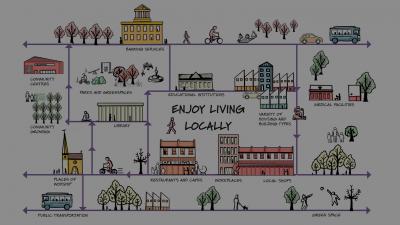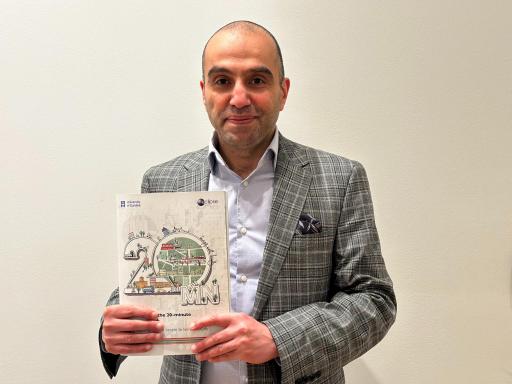Neighbourhoods where people can pop out to a shop, cycle to their doctor or walk children to school are places that many people have enjoyed in the past. But, given planning and urban design practices since the proliferation of the car, being able to do this cannot be taken for granted today. As local authorities look to tackle climate change, air pollution and promote healthier lifestyles, they are also looking to develop places where people can live well locally.
Some towns and cities already offer their citizens this style of living. For others, there is a widespread ambition to see 20-minute neighbourhoods widely woven into existing urban, suburban and rural life, so that people there can ‘live well locally’. In Scotland, for example, the government has committed itself to implementing 20-minute neighbourhoods nation-wide alongside its actions and ambitions for net-zero greenhouse gas emissions by 2045.
A major attraction of the 20-minute neighbourhood is that it appears straightforward and easy to grasp. But this is an illusion. Behind this seemingly simply idea lies a great deal of complexity, making it difficult to achieve in practice. Many post-war neighbourhoods have been designed around the car. Creating a 20-minute neighbourhood requires bringing together many strands, not all of them in the gift of the local authority, and many beyond the control of planners and urban designers. Implementing them may require overcoming a degree of fear and scepticism from local stakeholders.
So what are the necessary ingredients to create a 20-minute neighbourhood? How do you bring them together? And how do you get the necessary buy-in from stakeholders?
This is what the guide seeks to explain. It is intended for anyone who wants to improve their understanding of the meaning and implications of 20-minute neighbourhoods. This includes politicians, policymakers, local council officers and councillors, developers, planners, designers, NGOs, local businesses, community groups and residents’ associations. And urban designers and planners will find it useful too.
The guide takes readers through key considerations for a 20-minute neighbourhood strategy. This includes the following ideas.
- Understanding and articulating the desired outcomes that politicians, planners, architects, urban designers and other decision makers want to achieve.
- Correctly assembling the means - mechanisms, levers, triggers and causal factors – necessary to produce a 20-minute neighbourhood.
- Setting out the changes and behaviour required to support the successful operation of a20-minute neighbourhood (essential even where the ends and means can be achieved).
It’s worth noting, a ‘20-minute neighbourhood’ defies clear definition. There is no single paradigm around which to organise thought and action. Instead, there are competing viewpoints about how best to deliver 20-minute neighbourhoods, and how much priority should be given to each of their component parts. Each case or project has its own specific context and circumstances. What may work in designing a new urban neighbourhood may not apply when retrofitting an existing one.
We hope that armed with the knowledge and advice in this guide, both professionals and lay people seeking to develop 20-minute neighbourhoods will feel better informed and more confident about if and how to rollout the concept to suit their local circumstances.
Special thanks are given to sponsors and contributors Urban Design Group, Sustrans, ADAM Architecture, Corstorphine & Wright Architects, Hilson Moran, and Proctor & Matthews Architects
© The Authors 2024. This work is openly licensed via CC BY 4.0.
For More Information Contact Dr. Husam AlWaer h.alwaer@dundee.ac.uk


